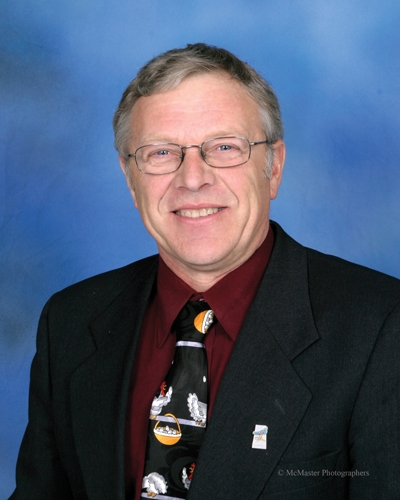
Stan and Marie Fehr
By Treena Hein
Features Producers Profiles Business/Policy Canada Poultry Production Production Profiles SustainabilityFifth-generation Saskatchewan egg farm is truly a family affair
 Stan Fehr (above) and his wife Marie have never stopped improving their farm, as “food safety and quality are high priority.” Saskatchewan Egg Producers
Stan Fehr (above) and his wife Marie have never stopped improving their farm, as “food safety and quality are high priority.” Saskatchewan Egg Producers“It’s truly a family operation,” says Stan Fehr of his egg farm north of Saskatoon near Hague.
Stan and his wife, Marie, started their own operation in 1972 and formed a partnership with his parents in the fall of 1973.
Their son Vince and daughter-in-law Mary live on his parents’ nearby homestead and produce up to 160,000 pullets annually. Son Gerard and daughter-in-law Anne primarily look after the farm’s beef cattle operation, and Gerard is the operation’s primary machine operator. But, adds Stan, “we all do a bit of everything, particularly at harvest time. You might see Marie driving the combine, and our daughter Kaylin driving a truck. Our other daughter Rochella is not involved directly with the farm on a daily basis but comes home when she has time and takes an active interest.”
“Producing food is part of my life and I’m proud of it,” Fehr says. “It’s nice to have all the kids and grandkids involved. I consider myself blessed.”
In 1972, the Fehrs raised 5,000 layers, a number that has grown to 60,000, 44,000 of which are quota, with the balance eggs-for-processing. The family also farms 2,600 acres of canola wheat, field peas, barley, alfalfa and triticale, in amounts that vary year to year. In 1989, they made the decision to begin irrigating and now irrigate about 200 acres.
“There have been some years when the irrigated land provided a good crop and on the non-irrigated land, we had basically no crop,” says Fehr. “We aren’t far from the Saskatchewan River and having irrigation forms a safety net, although it does require more management.” He says there is currently not much pressure on the river in terms of usage. “There’s a minimum flow that is always maintained, but eventually, we expect that there will be more monitoring and more projects that draw water.”
A feed mill has been on the farm since the 1970s, and is managed by daughter Kaylin. “We’ve changed from proportional mills to ribbon mixers, with all the capacities needed to get an exact ration,” says Fehr. “We do use our own crops, we grind canola, but we sell the highest quality and buy back lower grade grains for the feed.”
To keep up with the evolving genetics of the chickens, the ration has changed quite a bit over the years. “We used to get 244 eggs per bird annually, and today 320 is not uncommon,” he says. “To do that, you have to have a more precise ration. We use a pre-mix, and a nutritionist helps us with the rest. That requires getting him all the production information on a regular basis.” Fehr says there is now much more fine-tuning of the ration’s energy levels and amino acids than there has been before.
“We do alternate the breeds we use from year to year,” he adds. And with a lot of consolidation over the years, there is fierce competition to produce the best. “There are different strengths with different breeds and we want to give them all a try,” says Fehr. “The genetics are always changing.” In terms of the evolution in production equipment and systems, he thinks that “manufacturers have looked at all aspects from the production point of view and they’ve done a good job.”
New production practices
“Growing up, we always had chickens on the floor,” says Fehr. “In 1967, Dad built a new barn with cages, which was a revolutionary step at that time. It was a somewhat controversial decision within the family, but it definitely improved cleanliness, and I’ve been really surprised to see a move back to free-run. But the consumer wants it and we don’t want to ever say we know better.”
The Fehr farm has cages, but Stan says there are other egg producers in the province who serve the needs of consumers who want cage-free. However, he notes, “if demand goes up, operations like ours will make these changes,” he notes.
Fehr sits on the board at the Saskatchewan Egg Producers (and is a former vice-chair) and serves as an Egg Farmers of Canada Saskatchewan director. He is also a former board member of the Farm Animal Council of Saskatchewan. “It’s a form of community involvement and I’ve been involved with community involvement in other ways as well over my lifetime,” he says. “Taking part is something that everyone needs to do and I hope my contribution is positive.”
Fehr has been involved with many issues over the years at the association board level, and animal welfare is a significant one. “Most producers are very aware and have been doing a good job in this, and as consumers ask for more changes, we will change further. We have to be open about it and make changes before we are in a position where we are forced to,” he said.
“Food safety and quality are high priority. There are a number of food safety standard initiatives that we have put into place, with traceability being one of them.
“But we won’t stop there. We have to keep looking and watching and when there are changes or issues, we will address them.”
Print this page